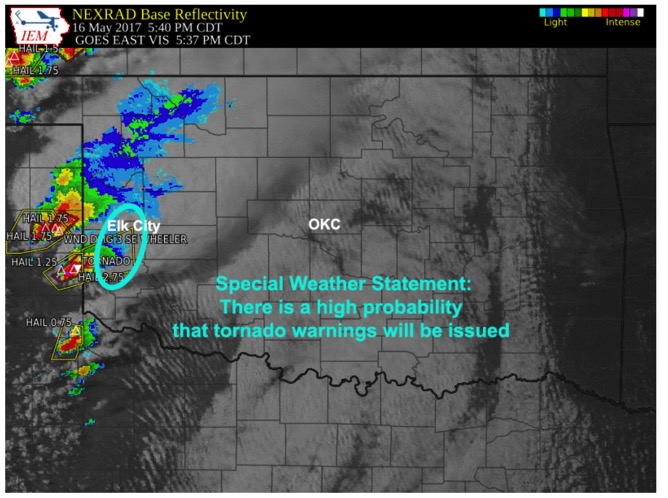In an earlier post, Tornado Sightings, I wrote about the importance of keeping an eye on macro trends.
Macro trends are big social and economic shifts – technology, consumer demographics, culture, or historical turnings – that can reshape markets and create big new opportunities. When you pay attention to the horizon, you can see macro trends coming your way and have time to prepare for and capitalize on them.
In the natural world, scientists are making it easier than ever to tell if a tornado will hit. The National Weather Service has an experimental strategy, Warn on Forecast, which allows forecasters to issue warnings before storms form, based on high-resolution satellite imagery, radar data and surface observations. This data is fed into a very high-resolution weather model that is run every 15 minutes for a period of time on storms of interest or for areas that could produce storms. The net benefit is that citizens have a lot longer time to respond.
But we don’t have early warning systems in the business world (at least, not this accurate). And not every macro trend we see in the business world requires a full-out corporate response. As marketers we need to evaluate trends and decide what to do about them.
An approach I have found helpful is inspired by how communities respond to real tornadoes: spot the trend, describe it, understand it, predict its impact, and act.
Ten questions to assess macro trends
1. Where do trends ultimately affecting my business tend to start? (spot)
If you track back previous trends that have had an impact on your business, you can to identify some of the sources of these trends. What past trends can you trace back to their beginnings? Is there a pattern?
2. What are the warning signs? (spot)
Consider what early signs you could look for and how to measure them, to get further ahead of what’s happening. For example, if you want to know what’s coming to your grocery store in the next year or two you might want to attend the Aspen Food & Wine Magazine Classic.
3. What trend do we see on the horizon? (describe)
How would you describe the trend? It might be expressed as a new interest, an emerging concern, or a major shift in consumer attitudes or behaviors.
4. What are the roots of this trend? (understand)
Consider the history of the trend and its causes or inspirations. Is this trend sparked by a single event, or is it part of a major historical cycle?
5. How fast is it developing / gaining in popularity? (understand)
Are opinion leaders embracing this trend? Does the trend appear “sticky”?
Diffusion of Innovations theory tells us that when about 16% of the population adopts a new innovation, it reaches a tipping point where people think “everyone is doing it” and adoption accelerates.
6. Who or what will be affected? (understand)
Consider who, and how many, will be affected. Will this trend impact your core customers? What other important constituencies, such as strategic partners, will be affected?
7. What will happen – good or bad – when the trend does take hold? (predict)
Role play what would happen to those affected if the trend takes hold. What’s the initial impact likely to be? What follow-on impacts will this cause, in turn? What scenarios can you envision?
8. What are the likely consequences? (predict)
What are the benefits or how serious will the negative consequences be if the trend takes hold on a large scale? If they are significant and long lasting, the trend requires a response.
9. What to do about it? (act)
There are four main strategies for responding to trends: embrace, counter, deflect, or ignore. If you believe the trend will stick, and your company is likely to benefit, consider associating with the trend and building products or services to further capitalize on it. If the trend is likely to threaten your business you can argue against it (counter) or try to change the conversation (deflect). But if your most important constituencies aren’t affected, consider masterly inaction (ignore).
10. How shall we do it? (act)
Once you decide on your overall strategy, now you have the task of forming a specific plan and assigning people and resources. Even if you have decided to ignore at trend, you’ll still need to communicate your reasoning to your constituencies.
______________________________________
In the natural world, when a tornado hits, your range of actions is pretty limited: hope it doesn’t touch your neighborhood, try to out run it, or retreat to your underground bunker.
In business, we have more options, as long as we take a careful look at the trends coming our way. I hope the questions above will help you evaluate and respond more effectively.
What’s your process for evaluating macro trends? I’d love to hear.
This post was originally published by the American Marketing Executive Circle.
(Main photo source: https://weather.com/news/weather/news/experimental-model-weather-tornado-warn-on-forecast)

